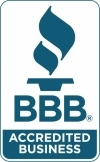You have a brand new puppy in your home. Congratulations! There’s a joy that a new puppy brings that makes the addition memorable and impactful. It also comes with a new set of responsibilities, one of which includes socializing them properly and at the right time.
Here are some common questions and answers around puppy development, steps to help your puppy adjust to their surroundings, and build confidence for many years to come.
Question 1 – When is the right time to start socializing your puppy?
“The best time to start socializing your puppy is right now,” says Larimer Humane Society Behavior Supervisor Mary Babbitt. “Puppies have a narrow window of a true socialization period which ends at 14 to 16 weeks of age. Every day between 8 weeks and 14 weeks is important for optimal socialization.”
When a puppy is first born, she’s curious and wants to explore the world around her. But did you know that the initial socialization is crucial to building success as she heads into adulthood? As the leader of her “pack,” it is your responsibility to introduce her to different people, places, and situations that will help mold her into the adult dog you want her to be. Building this confidence and teaching her how to adjust will go a long way in helping your puppy lead an amazing life.
As soon as your veterinarian says it is safe for your puppy to be in situations with public exposure, we recommend providing her with this. Let her learn how to behave in different situations and enjoy interacting with people outside your home, rewarding her positive behavior. The earlier you start, the more of a difference you will make on her future behavior.
Question 2 – How do I socialize my puppy with people and situations outside the home, especially while socially distanced during COVID?
“Many people think socialization is just exposure – exposing a puppy to as many things as possible,” says Babbitt. “Good socialization is actually about positive experiences which can be different for each puppy.”
The COVID-19 pandemic can make it difficult for socialization to occur, but there are still ways to give puppies the experience they need while keeping everyone safe. Ideas for socializing her include:
- Sitting with her outside in an exercise pen and let her watch the neighbors conduct their activities.
- Wear different hats and clothing around the house and yard as you imitate a “stranger” which will help her with stronger interaction.
- Teach your puppy how to walk over, run under, and around different things in the house. This could include walking over a cookie sheet or a pillow so she experiences different textures.
- Take your puppy for car rides. Start out by making the trips short and enjoyable, while extending their time as you get further into socialization. Just remember not to leave your puppy unattended in the car, and ensure she’s not overheating.
- Expose your puppy to different sounds in the house by playing soundtracks, music, or sound effects. Do this while she plays, rests, and eats.
“For a very outgoing, confident puppy, seeing other dogs and people (even from a distance) and hearing strange sounds, walking on novel surfaces, etc. might be fun by itself. For a very shy puppy, learning about strangers from a distance while getting lots of yummy treats might be more their speed,” says Babbitt.
Puppies will be looking at the world around them with wonder and amazement, along with two wide-open eyes. The key is to make their first interaction a positive experience for everyone involved.
Babbitt says to make it fun for you and your puppy by introducing two to three new things to your puppy every day. “Maybe on Monday, the puppy gets treats while seeing other people or they get to chase their favorite toy after walking over a wobbly ramp.”
Babbit encourages “If you have kids, get them involved by creating puppy ‘Socialization Bingo’ which they can use to have fun and check off at the same time. Socialization is about positive experiences with anything a puppy might need to handle as an adult, so try to work on sights, sounds, textures, and more. Remember to always go at your puppy’s pace and make it a positive experience.”
For other ideas on how to introduce your puppy to socialization that can be used during the pandemic and post-pandemic, check out this link which provides a sample checklist that can be helpful.
Keep in mind that the earlier you can introduce your puppy to socialization, the better for her and your family. More than anything, enjoy these moments because they will create memories that will last for many years to come!




